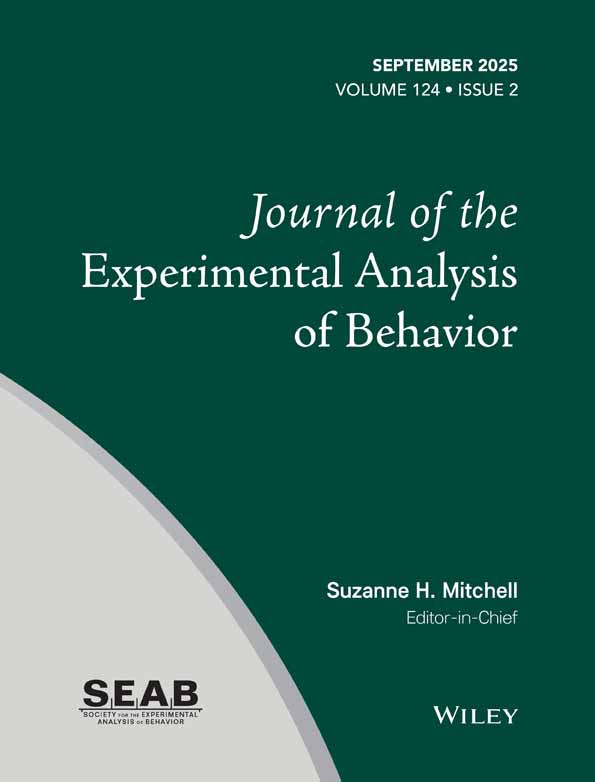THE EFFECT OF THE SIZE OF THE TEST ENVIRONMENT ON BEHAVIOR UNDER TWO TEMPORALLY DEFINED SCHEDULES
Abstract
The effect of the size of the floor area of the operant test chamber on behavior was tested using a standard-size test chamber and a test chamber with one-fourth of the floor area of the standard chamber. Two groups of pigeons were tested under a differential-reinforcement-of-low-rate 15-sec schedule or a variable-interval 60-sec schedule. Both groups of pigeons had higher response rates while in the smaller floor area. Pigeons under the differential-reinforcement-of-low-rate schedule also showed a decrease in rate of reinforcement, an increase in ratio of responses to reinforcements, and an alteration in interresponse-time-per-opportunity distributions when tested in the reduced floor-area condition. These effects are similar to those found under physical restraint, indicating that amount of floor space available for locomotion interacts with schedule behavior and that physical restraint may be regarded as the lower limiting value of amount of floor area available for locomotion.




